
views
Using Basic Erosion Prevention Techniques
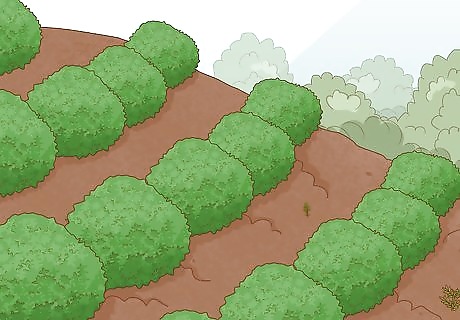
Plant grass and shrubs. Bare soil is easily swept away by wind and water, the two main causes of erosion. Plant roots hold the soil together, while their leaves block rain and stop it from breaking the soil apart. Turf, ornamental grass, and low, spreading shrubs work best since they cover the soil completely. If you have any bare ground, try to establish plant cover as soon as possible to limit erosion. If the ground is mostly flat (slope of 3:1 or less), this might be enough to solve the problem. Steep slopes erode faster, so they need more protection.
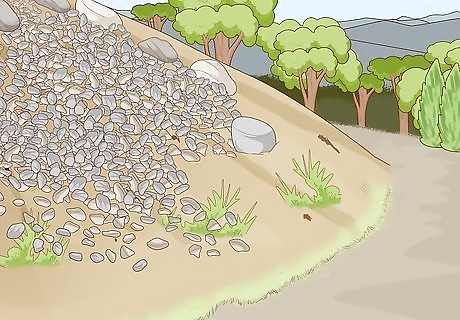
Add mulch or rocks. This will weigh down the soil and protect the seeds and young plants underneath from getting washed away. It also slows the absorption of water to reduce runoff. Grass clippings or bark chips work especially well.Note: If you plant something in the soil, the plant’s roots can hold the soil together, and you may not need mulch or rocks. If you don’t plant anything, keep the soil covered with mulch. You can also add mulch around plants to add another layer of protection or to keep the soil warm.
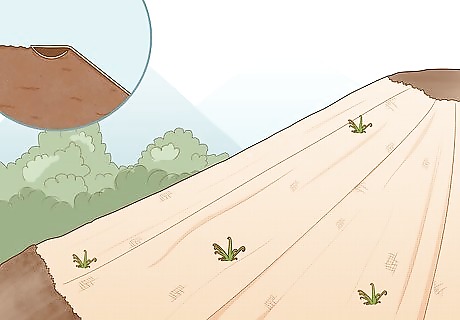
Use mulch matting to hold vegetation on slopes. Simply lay the mat over your seeds or young plants. On steep slopes, dig a small trench at the top of the hill first. Lay the top of the mat in the trench, fill it up with soil, then fold the mat back over the top. This helps water run over the top of the mat, where the mat will slow it down, instead of traveling underneath it. Fiber mulch mats or erosion control mats are a layer of mulch held together in a fiber mesh. This structure holds the mulch together in areas where normal mulch would be washed or blown away.

Put down fiber logs. Another option for erosion control on steep slopes is a series of rolled up logs or "wattles" made from fibrous material (like straw). Water running down the slope will slow down when it hits the logs, soaking into the soil instead of carrying mud downhill. Put the logs down across the slope, 10 to 25 feet (3–8m) apart. Hold them in place with wooden stakes or sturdy, living plants. You can plant seeds directly in the logs to protect them while they grow. If you do plant seeds directly into the logs, you should still use stakes to hold the logs in place, at least until the seeds develop sturdy roots that go into the soil.
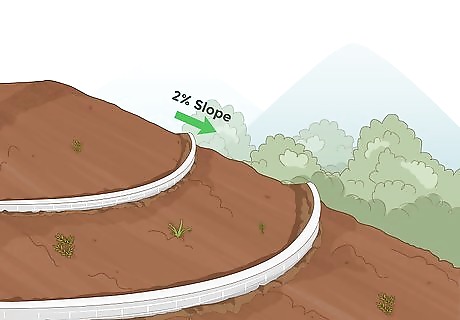
Build retaining walls. Badly eroded slopes will continue to collapse downhill until they are stabilized. A retaining wall at the base of the slope will block the soil and slow down the collapse. This gives grass or other plants time to grow and help the soil hold together. Give the wall a 2% slope on the side (perpendicular to the incline) so that water flows off to the side instead of pooling. You may build the wall from concrete blocks, rock, or wood. Only use wood treated with a preservative to prevent rot. Use retaining walls around flowerbeds and other raised soil areas as well. You may need local government approval to build these structures.
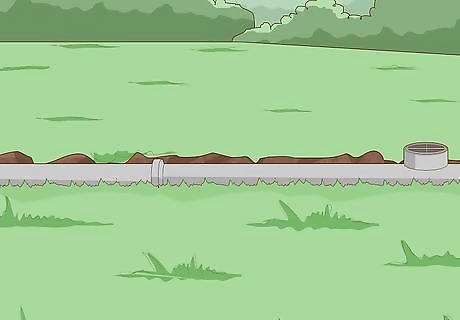
Improve drainage. All buildings should have gutters or pipes that can drain water effectively out of your garden and into water collection systems. Without adequate drainage, heavy rain could wash away a whole layer of topsoil. Areas with heavy water runoff may require installing an underground perforated drainage pipe.

Reduce watering if possible. Over-watering your garden can speed up erosion by washing away soil. Use less water if you can, or install a drip irrigation system. Since a drip system only delivers small amounts of water at a time, there is no water flooding across the surface to carry topsoil. Tip: You can also install drip lines underground to deliver water directly to the roots.
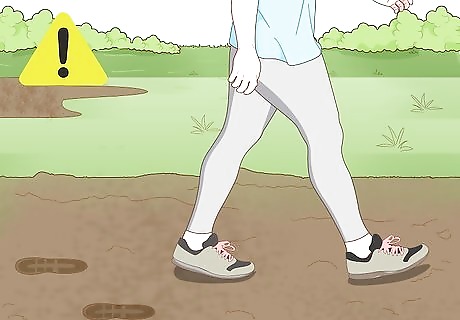
Avoid soil compaction. When people, animals, or machines travel over soil, they press it down, compacting the soil into a dense layer. Since there is less space between dirt particles in compacted soil, water has a hard time draining through, and carries soil on the surface downhill instead. Walk on paving stones or cleared paths instead of trampling the soil, especially when it is wet. Adding compost or manure can also help by attracting earthworms, which break the soil into looser clumps. Compacted soil also makes it harder for plants to become established, since the roots have trouble breaking through. Compaction always lead to net erosion. The water may run off of compacted soil, but as it runs off it generates more force, which can increase the erosion in other areas.
Preventing Farmland Erosion
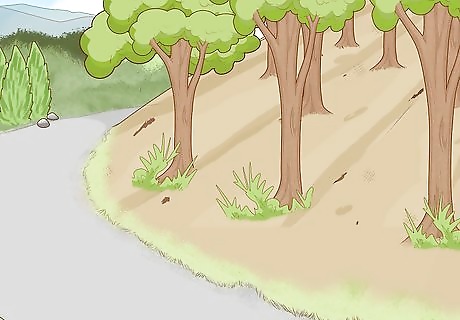
Plant trees to prevent landslides. Tree roots are powerful tools when soil is too eroded or steep to plant. Plant native trees on steep slopes and riverbanks to reduce soil loss. Bare ground around the tress still needs to be covered in mulch or grass for best results. Keep in mind that older trees will be more effective at preventing landslides than new saplings. It may take some time before your tree develops roots that are strong enough.
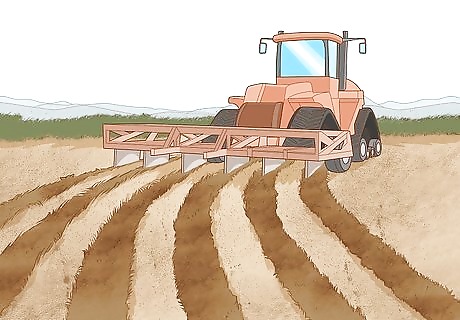
Reduce tillage. Deep, frequent tillage creates a layer of compact soil vulnerable to water erosion, topped by loose soil easily removed by wind. Consider a zero-tillage approach using a coulter or other deep planting device. Tip: If this is not feasible, try a ridge-till or mulch-till system that leaves the lower soil levels untouched. These conservation tillage techniques also reduce the amount of vehicle traffic, and therefore soil compaction.

Protect weak crops with strip cropping. Crops with weak roots or that need to be sparsely planted are more vulnerable to erosion. Plant these in strips, alternating with strips of an erosion-resistant crop such as dense grass or legumes. Plant the crops so they contour the slope. Plant these crops perpendicular to the prevailing wind if possible.
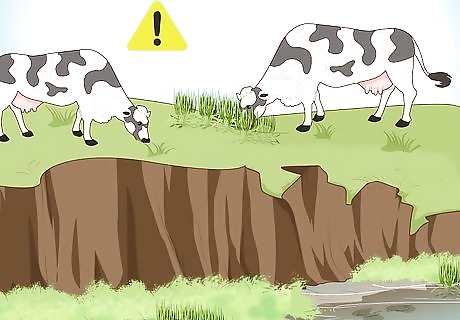
Practice wet season spelling. Grazing land cannot remain healthy and erosion-resistant if cattle are allowed to graze year-round. For best results, close off a paddock for the entire wet season to allow grasses to reestablish themselves. This may not be effective if the other paddocks cannot support the spelled cattle. If possible, keep cattle away from riverbanks and heavily eroded soil at all times.
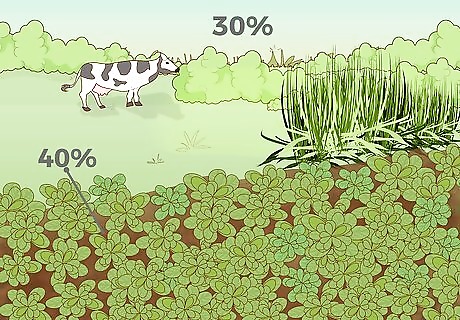
Keep soil covered year-round. Bare soil is far more vulnerable to erosion than soil with ground cover. Aim for at least 30% ground cover on all grazing land, ideally 40% or more. After you harvest your crops, leave the residue on the soil as mulch. Alternatively, plant hardy winter crops.
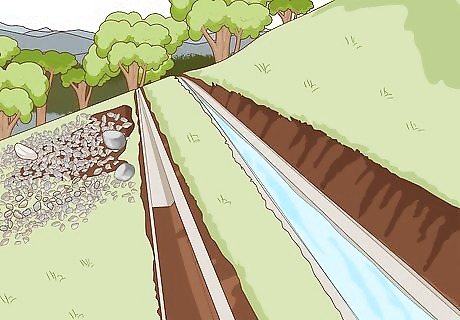
Control downhill runoff with flumes. Runoff is concentrated into a narrower area as it travels across lands. The points where the concentrated runoff reaches a slope are particularly vulnerable to erosion. You can build a paved flume, or lined channel, to lead the water to a safe drainage system. Build these at gully heads as well. Another option is to build a swale to re-direct the runoff into a pond. Building several swales along a hillside can greatly reduce runoff volume and eliminate the need for a paved channel. Do not build flumes on slopes steeper than 1.5:1.
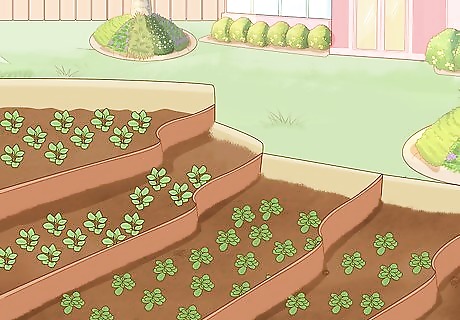
Turn a hillside into terraces. The steepest slopes are almost impossible to farm on. Turn the hill into terraces instead by building retaining walls running across the slope. In between the walls, grade the soil level to create a flat area resistant to erosion.


















Comments
0 comment